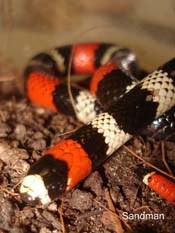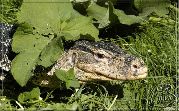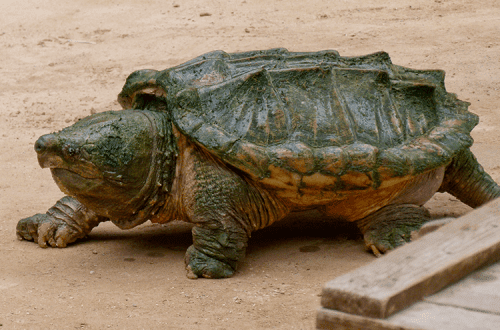
Aspid coral tape
ASPID CORAL BELT (Micrurus lemniscatus) Lives in Brazil, in the north of South America and the islands of Trinidad. It is colored similarly to the cobra snake, but the yellow stripes that break the black ribbon are much narrower. This species is one of the most common asps in southern Brazil. It has its own name among the locals – ibiboboka, which also penetrates into scientific literature.
Sources of
http://ours-nature.ru
http://zmeuga.ru
http://dic.academic.ru
http://bridjarnja.narod.ru
Food
This asp feeds mainly on small snakes and lizards. However, it can also eat large insects.
Additionally
In Brazil, the locals call the coral ribbon asp the ibiboboca.
Description
 The pattern is formed by transverse wide red rings. Between them is a combination of three black and two white-yellow rings. The color of the coral ribbon asp is similar to the color of the coral asp, but the white-yellow stripes that break the black ribbon are much narrower. The tip of the muzzle is black, followed by a white ring, black going further crosses the eyes, and the neck is already red. It is a very thin snake with smooth skin covered with small scales and small eyes. The pupil of the coral ribbon snake is round.
The pattern is formed by transverse wide red rings. Between them is a combination of three black and two white-yellow rings. The color of the coral ribbon asp is similar to the color of the coral asp, but the white-yellow stripes that break the black ribbon are much narrower. The tip of the muzzle is black, followed by a white ring, black going further crosses the eyes, and the neck is already red. It is a very thin snake with smooth skin covered with small scales and small eyes. The pupil of the coral ribbon snake is round.
The mouth, like that of the coral asp, is rather weakly extended. Poisonous teeth are also quite small in size, which, however, does not detract from their danger. The teeth themselves are furrowed, located in the upper jaw in front. They are larger than all other teeth, bend back and are equipped with a toxic canal. These teeth are primitive, as they are fixed in the oral cavity. Like the rest of its species, this snake, when biting a victim, clings tightly to it and strongly clenches its jaws. This is done so that the action of the poison is as fast as possible. As for the venom itself, it is extremely neurotoxic. After a bite, a fatal outcome can occur extremely quickly if the necessary measures to prevent it are not taken. At the site of the bite, there is no swelling, no swelling, no redness, although there are sharp pains. However, this does not affect the consequences. One of the main causes of death is paralysis of the respiratory center.
This snake, like almost all representatives of its species, is oviparous.
Inhabitation
This species is distributed in the territories of Brazil, on the islands of Trinidad, in the north of South America and Tobago. You can meet the coral ribbon asp in tropical forests, on plantations, occasionally this asp can get close to human habitation.





